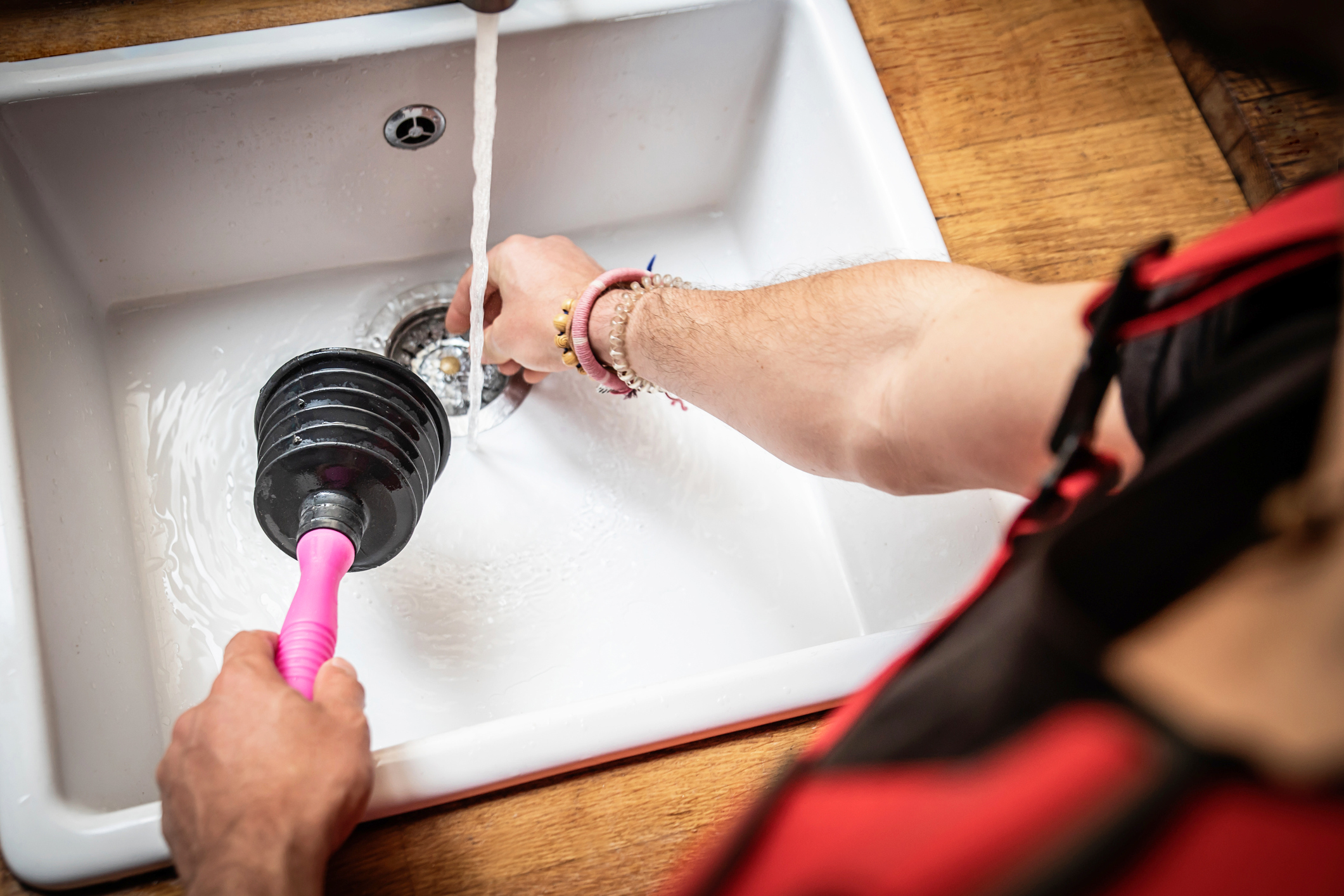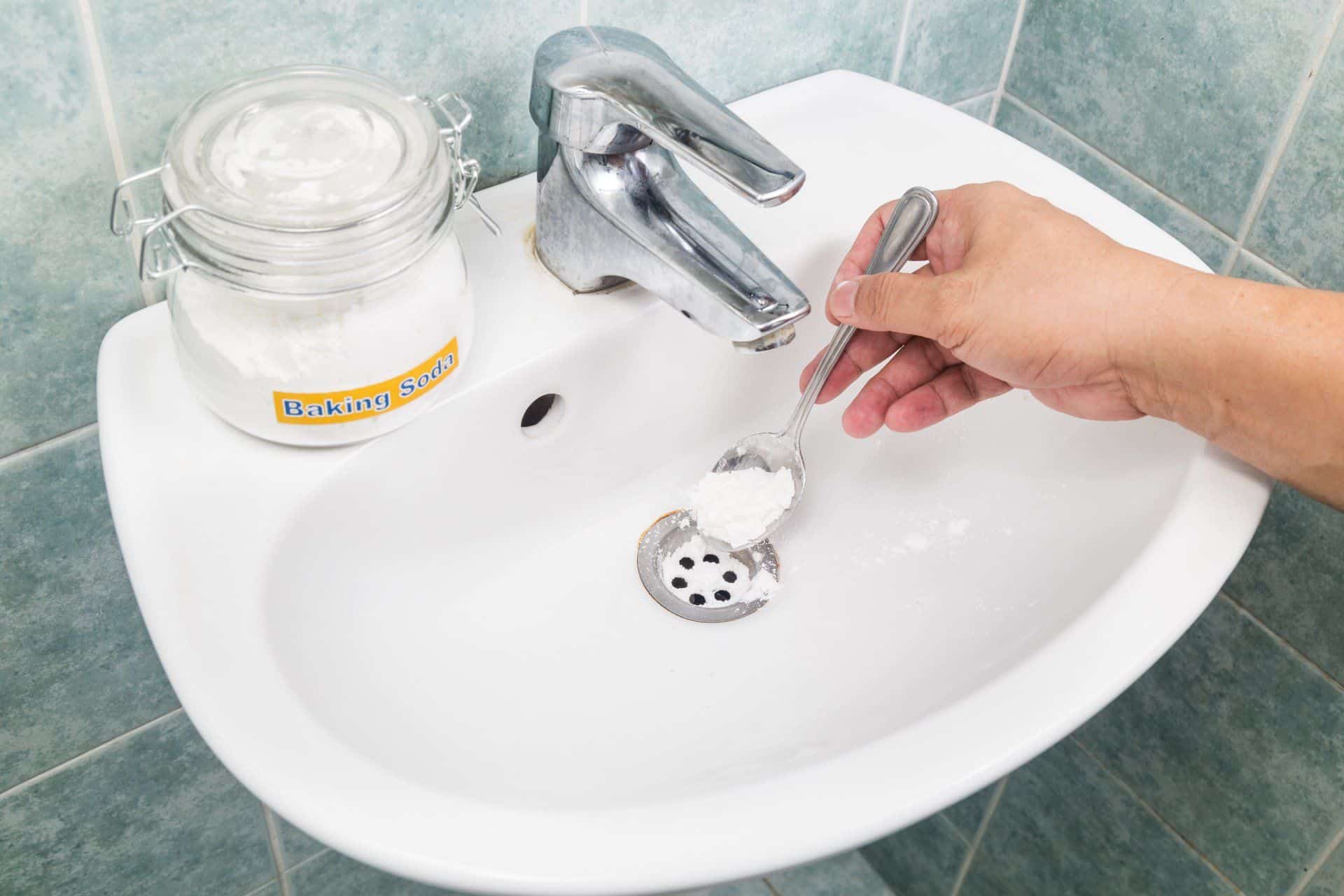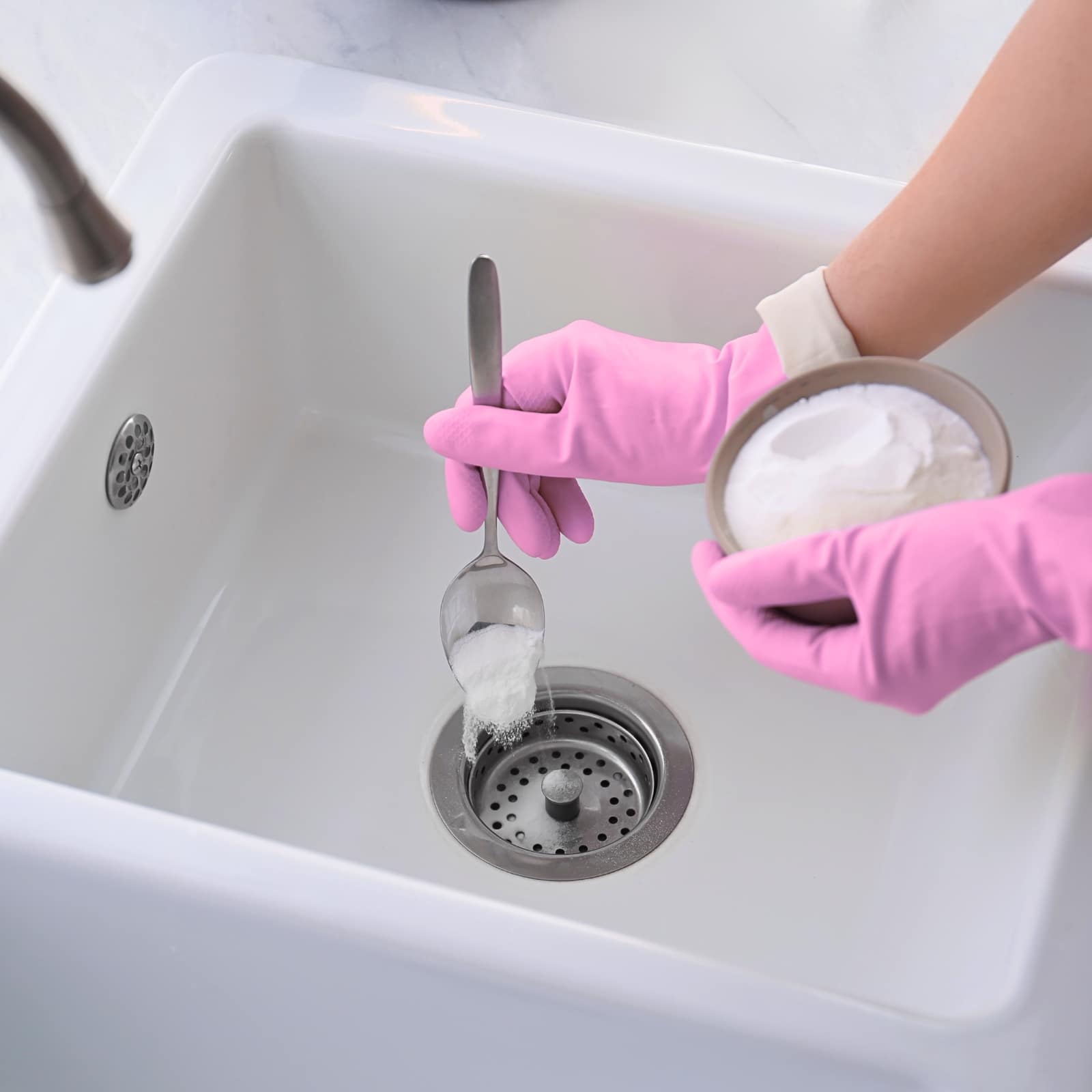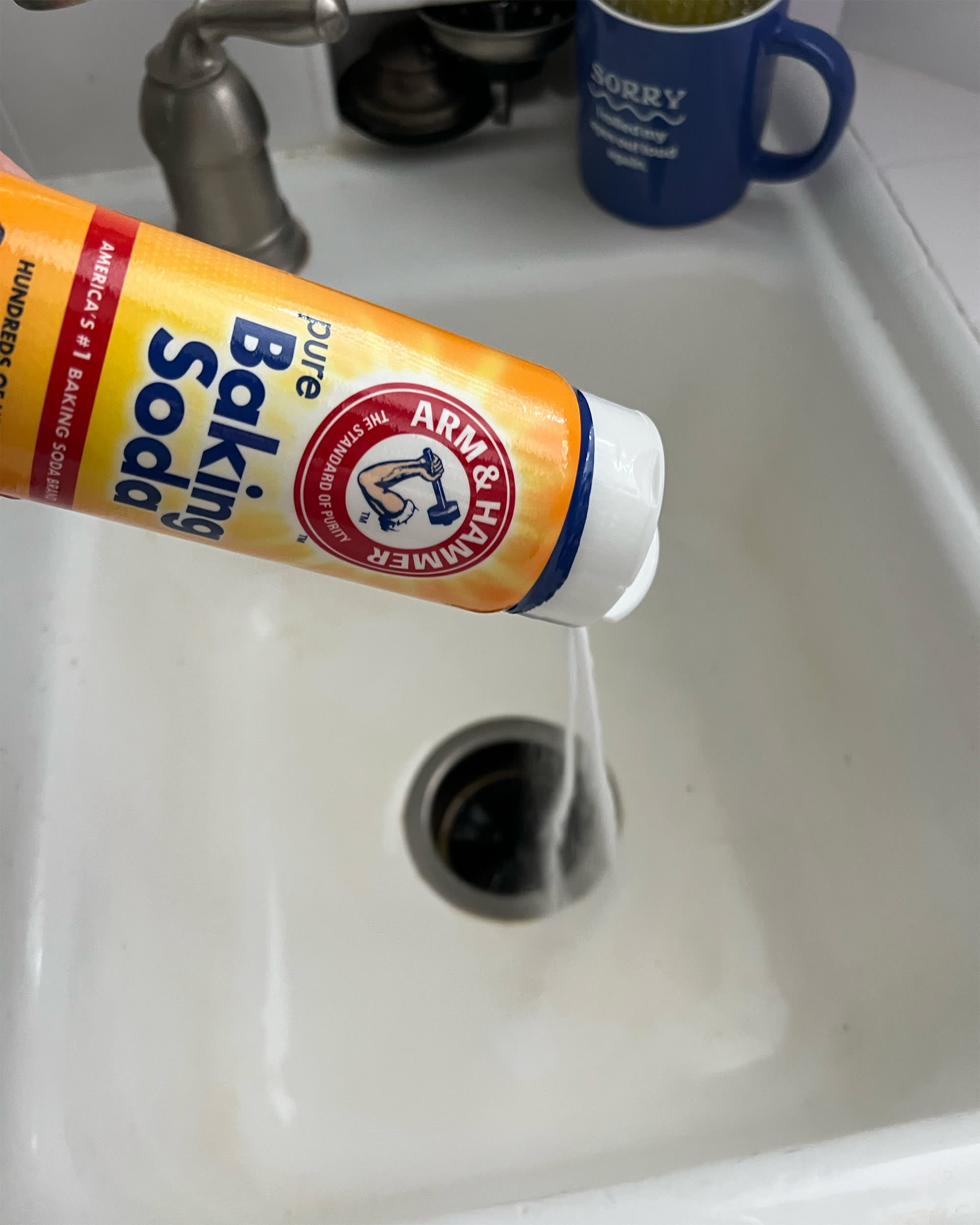Introduction: The Unsung Hero of Kitchen Cleaning
In the bustling heart of every home, the kitchen sink stands as a testament to daily life – a place where meals are prepared and dirty dishes pile up. Over time, this hardworking surface can accumulate grime, stains, and unpleasant odors, turning it from a gleaming centerpiece into an eyesore. Enter baking soda, the unassuming pantry staple that moonlights as a powerful cleaning agent. This humble white powder, known scientifically as sodium bicarbonate, holds the secret to restoring your sink’s shine without resorting to harsh chemicals. Let’s dive into the magic of using baking soda to transform your kitchen sink into a sparkling haven.
Understanding Baking Soda’s Cleaning Power
Baking soda, or sodium bicarbonate, is a mild alkali that reacts with acids, making it incredibly effective at breaking down grease, dirt, and even some mineral deposits. Its gentle abrasiveness allows it to scrub away stains without scratching surfaces, while its natural deodorizing properties neutralize unpleasant smells. Unlike many commercial cleaners, baking soda is non-toxic, environmentally friendly, and affordable, making it a go-to solution for eco-conscious homemakers and budget-savvy individuals alike.

Preparing for the Cleaning Process
Before embarking on your sink-cleaning mission, ensure you have all the necessary tools at hand. You’ll need:
- Baking soda
- White vinegar (optional, for extra cleaning power)
- A soft-bristled brush or sponge
- Warm water
- A clean, dry cloth
- Rubber gloves (optional)
Clear the sink of any dishes, utensils, or debris, and give it a quick rinse to remove loose particles.
The Cleaning Ritual: Step by Step
1. Sprinkle and Soak
Begin by generously sprinkling baking soda over the entire surface of the sink, including the drain and faucet. For tough stains or heavy buildup, make a paste by mixing baking soda with a small amount of warm water until it reaches a toothpaste-like consistency. Apply this paste directly onto problem areas and let it sit for at least 15 minutes. This allows the baking soda to penetrate and loosen stubborn grime.

2. Vinegar’s Helping Hand
For an added cleaning boost, pour a small amount of white vinegar over the baking soda layer. The chemical reaction between the two will create a fizzy, effervescent cleaner that further breaks down dirt and disinfects. Let the mixture work its magic for another 5-10 minutes. If you prefer not to use vinegar, skip this step and proceed to the next.
3. Scrub-a-Dub-Dub
Put on your rubber gloves if desired, then take your soft-bristled brush or sponge and gently scrub the sink in circular motions. Pay special attention to heavily stained areas, the corners where grime tends to accumulate, and around the drain. The combination of physical scrubbing and the cleaning properties of the baking soda will lift away dirt and stains.
4. Rinse and Reveal
Once you’ve scrubbed the entire sink, rinse it thoroughly with warm water. Use your hand or a clean cloth to wipe away any remaining residue, ensuring no baking soda or vinegar is left behind. Turn on the faucet and let the water run for a few moments to clear the drain as well.

5. Polish for Perfection
To achieve a truly dazzling finish, dry the sink with a clean, dry cloth. This step not only removes excess moisture but also imparts a streak-free shine. Pay particular attention to drying faucets and other metallic fixtures to prevent water spots.
Beyond Cleaning: Maintaining Your Sparkling Sink
Regular maintenance is key to keeping your sink looking its best. Here are a few tips to incorporate into your routine:
- Daily wipe-down: After washing dishes, give your sink a quick wipe with a soapy sponge or cloth to prevent buildup.
- Weekly baking soda treatment: Repeat the above process once a week for deep cleaning and to keep odors at bay.
- Preventive measures: Use a sink strainer to catch food scraps and avoid letting wet sponges or cleaning tools sit in the sink, which can encourage bacterial growth.
- Mindful disposal: Be cautious about what goes down the drain; certain foods and substances can cause clogs or damage.
The Environmental and Health Benefits of Using Baking Soda
In today’s world, where environmental consciousness and personal health are paramount, choosing natural cleaning solutions like baking soda becomes even more significant. Unlike conventional cleaning products that often contain harsh chemicals like bleach or ammonia, which can irritate skin, eyes, and respiratory systems, baking soda is entirely safe and non-toxic. It poses no threat to children or pets, even if accidentally ingested in small quantities. Moreover, its production and disposal have a much lower environmental impact, contributing to a greener and more sustainable lifestyle.

Baking Soda: A Multifaceted Cleaning Companion
The versatility of baking soda extends beyond the kitchen sink. It can be employed throughout the house as a natural cleaner, deodorizer, and even as a laundry booster. For instance, sprinkling some on carpets before vacuuming helps eliminate pet odors and freshens the room. Mixed with water to form a paste, it can tackle stubborn oven grime or bathroom tile stains. In the laundry, adding a cup of baking soda to the wash cycle can enhance detergent performance, brighten whites, and neutralize smells in clothes. Its multifaceted applications make it a must-have item in any home’s cleaning arsenal.
Embracing Minimalism and Frugality
Adopting baking soda as a primary cleaning agent aligns with minimalist and frugal living principles. By reducing reliance on a myriad of single-purpose cleaners, you simplify your cleaning routine and storage needs. This not only saves space but also reduces household expenses in the long run. As a low-cost alternative to commercial cleaners, baking soda embodies the concept of ‘less is more,’ proving that effective cleaning doesn’t have to come at a high financial or environmental cost.

Educating and Inspiring Others
Sharing the knowledge of baking soda’s remarkable cleaning abilities can inspire friends, family, and community members to adopt healthier and more sustainable practices. Demonstrating its effectiveness firsthand encourages others to make the switch, fostering a collective shift towards eco-friendly habits. As more households embrace natural cleaning methods, the cumulative positive impact on the environment grows, contributing to a cleaner, greener planet for future generations.

Conclusion: A Shining Example of Simple Solutions
Transforming your kitchen sink into a glistening focal point doesn’t require fancy cleaners or expensive tools. With just a box of baking soda and a little elbow grease, you can achieve professional-level cleanliness that not only looks impressive but also promotes a healthier home environment. This kitchen hack not only saves you money but also demonstrates the power of natural alternatives in our daily cleaning rituals. So, the next time you find yourself staring at a less-than-sparkling sink, remember that the solution might already be sitting in your pantry, waiting to work its magic.


